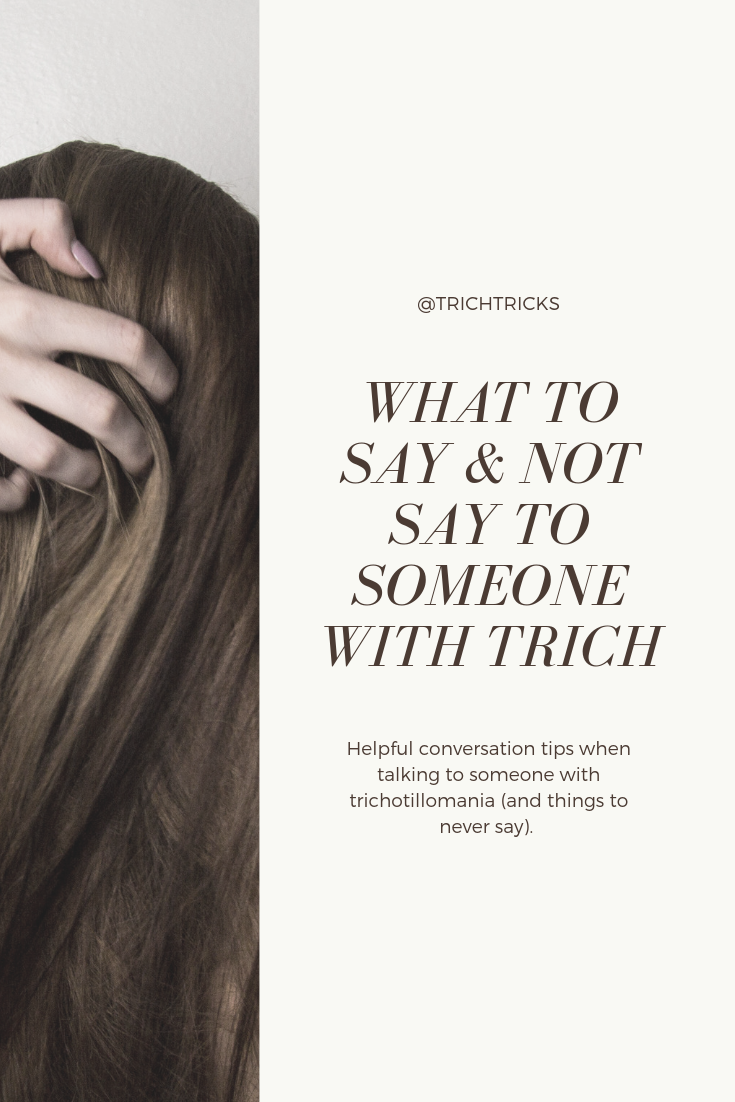Kimberley Quinlan Talks Trichotillomania
Kimblerley Quinlan is an Anxiety and OCD Therapist who helped me tackle the most common questions that I get on Instagram. Here’s what she had to say.
What are your thoughts on the goal of "pull free" (I've always been against this mentality because I believe one set back doesn't bring you back to zero. People deserve more credit than that.) Where do you stand?
I am not an advocate of being "pull free" but I do think it is possible. I am more of an advocate for finding a lifestyle that is realistic and lines up with ones values and morals. I find that it is very unrealistic and unhelpful to put standards upon ourselves such as being "pull free". I prefer to aim towards wellness every day and make that the focus. The more we focus on not pulling, often, the more we want to pull and pick. I often tell my clients to find small ways to make small improvements every day and through that process, we find habits and processes that work and are sustainable.
Sometimes I use the term “willpower” and get push back. How do you view willpower when it comes to OCD?
I prefer the word willingness over willpower. Because there is a disorder.
If people can't afford therapy, what are other low-cost options for seeking help?
There are great options that are free or low cost. Here are a few:
Workbooks (there are some great ones for OCD and BFRBs)
Devices: Keen (for BFRB's)
Podcasts such as The OCD Stories and Your Anxiety Toolkit
Online courses such as BFRB school and ERP School (cbtschool.com)
Apps such as NOCD and Skinpick.com and Hairpull.com
Websites such as chrissiehodges.com, BFRB.org, IOCDF.org, theocdstories.com, ocdla.com, ocdbaltimore.com
Instagram accounts
Facebook Support Groups
Instagram @KimberleyQuinlan
Fidget toys or behavioral replacements are not working…what's next?
I don't believe in "not working". I often ask my clients what they consider "working" to mean when they say that. When someone says "it's not working", this often implies that the fidget should take the discomfort away and make the urge go away.
The definition of "working" is willingly allowing discomfort while using a fiddle or a competing response or habit blocker. The urge will rise and fall on its own with time. The goal is to allow it to rise and fall and be as gentle and patient as we can while it does this.
Therapists talk about "sitting with the urge.” How does one do this?
Sit with the urge means willingly allowing the discomfort (using all of the senses) to be with you while you engage in the things you love (or have) to do. I do a 5 senses meditation (Ep.3 of your anxiety toolkit) that can help with allowing all the sensations to rise and fall on their own.
The best way to learn this is to really practice it in real-time. It is like being taught to ride a bike. You won't really learn it until you are in the seat peddling along.
Again, this isn't about control. It is about willingness. We don't need control to allow an urge to rise and fall. We need compassionate patience and tolerance of the strong emotions, sensations, and urges. A really important tool is to practice non-judgment as you ride a wave of discomfort. Try not to judge your experience. See Ep.1 of Your Anxiety Toolkit.
Thank you, Kimberley!
Be sure to follow her on instagram! Her posts will inform and inspire you!
Instagram @kimberleyquinlan









